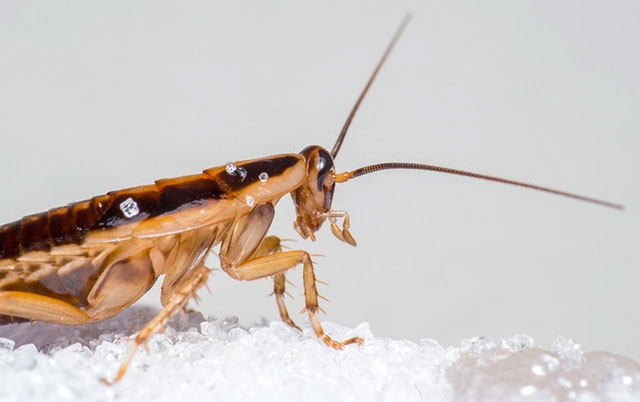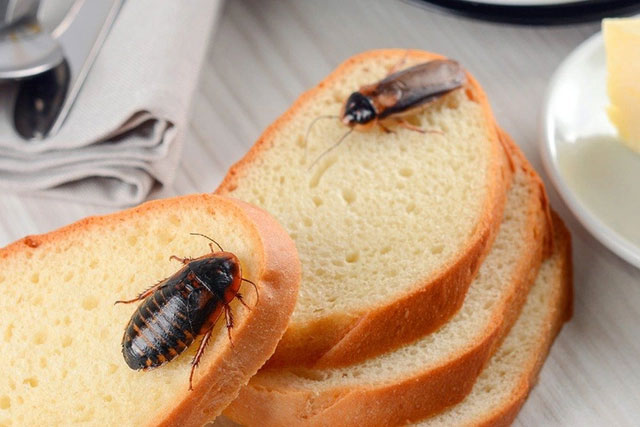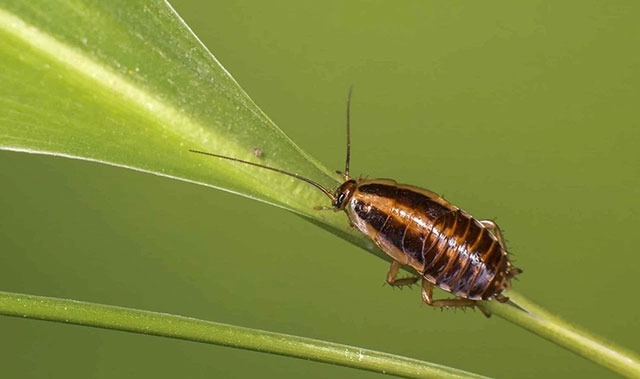Millions of people worldwide are facing the intrusion and troubles caused by cockroaches. There is a valid reason explaining the difficulty in control, as cockroaches are gradually developing mutations that help them adapt better.
A database indicates that cockroach species, particularly some populations of German cockroaches, have developed resistance to insecticides, essentially rendering chemicals ineffective against them. In residential areas of Southern California, research findings show that this species can survive exposure to five different types of pesticides.
Lead researcher Chow-Yang Lee, a professor of urban entomology at the University of California, stated that this is concerning because severe cockroach infestations can lead to health issues, such as asthma or allergies.

Cockroaches invading homes.
At least 11 different allergens are associated with German cockroaches, and these bacteria can spread like Salmonella. In summary, cockroaches can affect both the physical and mental health of individuals.
True to their fearsome reputation, among over 4,500 known cockroach species, only the German cockroach is known to have developed resistance to insecticides.
Using vacuums and traps, Lee and his colleagues collected hundreds of cockroaches from public housing areas around Los Angeles, San Diego, Vista, and San Jose. Residents in these areas often lack the means to hire professional extermination services, leading them to increasingly use store-bought pesticides.
This creates a vicious cycle. The more residents spray pesticides, the more cockroaches adapt and enhance their survival abilities. This was demonstrated following experiments conducted by Professor Lee’s team.

The German cockroach used in Professor Lee’s experiments.
Cockroaches that had never “rolled with the punches” would die quickly upon exposure to insecticides.
Meanwhile, cockroaches caught outside were also brought back to the lab and exposed to six common pesticides on the market. Most of these cockroaches survived and returned to normal within more than two weeks.
Only one of the six pesticides, named abamectin, showed immediate effectiveness. However, after nearly a year, the cockroaches gradually underwent bodily changes. As a result, their offspring exhibited better resistance to abamectin than the previous generation.
Thus, increased exposure to pesticides creates greater survival opportunities for cockroaches. They adapt, mutate, and reproduce, resulting in future generations of cockroaches possessing resistance to these chemicals. Professor Lee refers to this as a never-ending cycle.
Additionally, humans can also be affected by the use of pesticides indoors. According to the U.S. Environmental Protection Agency, pesticide residues in the home can cause headaches, dizziness, nausea, and increase the risk of cancer.

Professor Lee offers advice on coexisting with cockroaches.
Therefore, Professor Lee advises against the overuse of pesticides. Instead, keep homes clean and dry. Cockroaches are particularly attracted to pet food, so it’s important to store these foods in sealed containers when not in use.
Professor Lee also suggests learning more about wild cockroach species, many of which play beneficial roles in the environment. They can act as decomposers of leaves in the rainforest. Some even help pollinate flowers.
Furthermore, some cockroach species can actually be beneficial to humans. Living in filthy environments, cockroaches possess molecules that can kill even the toughest bacteria. Studying how this process works could help scientists find ways to combat antibiotic resistance in humans—a major concern in modern science.


















































